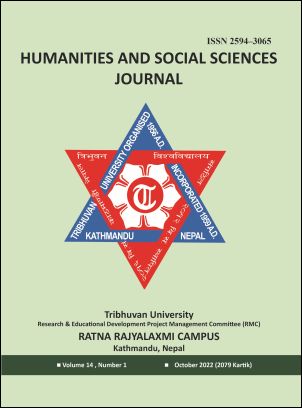Emotional Intensity in Vagabond: Prognosis of an Anti-hero?
DOI:
https://doi.org/10.3126/hssj.v14i1.57993Keywords:
anti-hero, emotional intensity, graphic novel, postmodernismAbstract
Vagabond is a graphic novel that unveils the story of a vagrant using visuals to intensely support dialogues. It provides a glimpse of the protagonist's emotional intensity of having both qualities of vice and virtue. Traditionally, the hero or protagonist is appreciated for good qualities, being brave, noble, strong, helping others, and admired for his achievements and abilities, not for evilness. The protagonist in Vagabond possesses all of the characteristics that have projected him to be a true hero. However, often some critics interpreted him as an anti-hero. This research will try to address the following questions: Why is the protagonist described as a vagabond in the novel? How graphics could be an effective tool for expression? How does the protagonist in Vagabond portray an anti-hero? What is the emotional intensity that contributes to his anti-hero status? This research article aims to answer the above questions and explore the protagonist Shinmen Takezo, a fierce warrior as a vagabond with an anti-hero identity having fiery magnitude fighting like a beast. Furthermore, it examines the changing paradox of beliefs and actions that are supposed to believe in a real hero of postmodernism with the effective use of graphic/visual frameworks.




